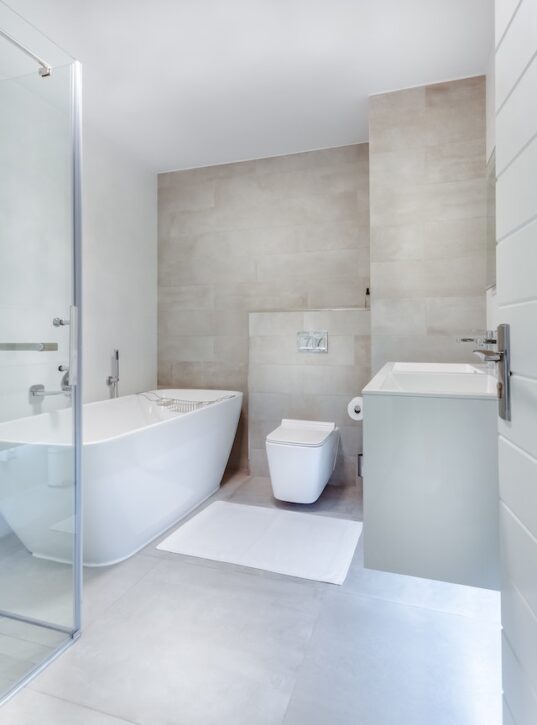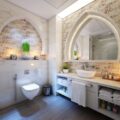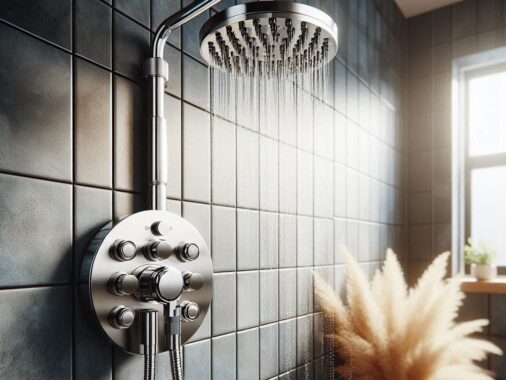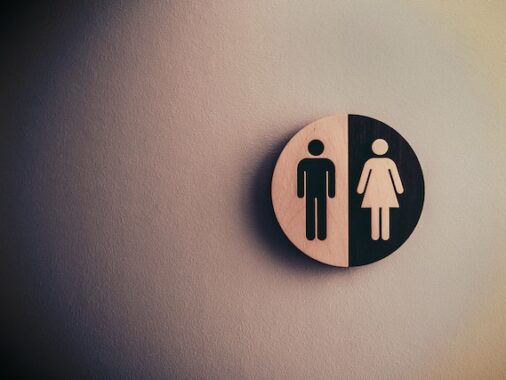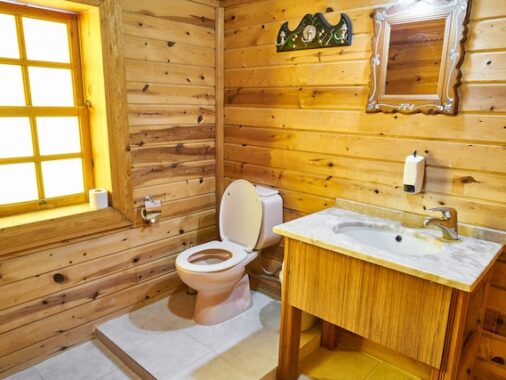When it comes to designing an eco-friendly home, the bathroom is an important space to consider. Not only is water usage a major concern in this area, but the products we use can also have a significant impact on the environment. Here are some tips for designing a sustainable bathroom that will help you reduce your carbon footprint and create a greener home.
Install Low-Flow Fixtures
One of the most effective ways to reduce water usage in the bathroom is by installing low-flow fixtures. Low-flow toilets, showerheads, and faucets can significantly reduce the amount of water used in the bathroom, saving you money on your water bill and helping to conserve this precious resource.
Low-flow fixtures work by restricting the flow of water, without sacrificing performance. For example, a low-flow showerhead can reduce water usage by up to 70%, while still providing a strong, satisfying shower experience. Similarly, a low-flow toilet can save up to 2 gallons of water per flush, compared to traditional toilets.
Choose Sustainable Materials
When designing a sustainable bathroom, it’s important to choose materials that are eco-friendly and sustainable. Look for materials that are made from renewable resources or recycled materials, and avoid products that contain harmful chemicals.
Some eco-friendly materials to consider include:
- Bamboo: A rapidly renewable resource that is strong, durable, and water-resistant.
- Recycled glass: A beautiful and sustainable material that can be used for countertops, tiles, and shower enclosures.
- Salvaged wood: Reclaimed wood can be used for flooring, vanities, and other bathroom fixtures, adding a rustic and eco-friendly touch to your space.
- Natural stone: A durable and long-lasting material that can be used for flooring, countertops, and shower enclosures.
Use Non-Toxic Cleaning Products
Cleaning products can contain harmful chemicals that are not only bad for the environment, but can also be hazardous to your health. When choosing cleaning products for your bathroom, look for non-toxic, eco-friendly options that are free of harsh chemicals and artificial fragrances.
Natural cleaning products, such as vinegar, baking soda, and essential oils, are great alternatives to traditional cleaning products. They are effective at removing dirt and grime, and are safe for both your family and the environment.
Incorporate Natural Lighting
Natural lighting is a great way to reduce energy usage in the bathroom, while also creating a bright and inviting space. When designing your bathroom, consider incorporating windows or skylights to bring in natural light.
If windows or skylights are not an option, consider using energy-efficient lighting options, such as LED bulbs. These bulbs use significantly less energy than traditional incandescent bulbs, and can last up to 25 times longer.
Invest in a Water Filtration System
Installing a water filtration system in your bathroom can help to reduce the amount of water bottles you use, while also improving the quality of your tap water. A water filtration system can remove impurities, such as chlorine and lead, from your tap water, providing you with clean and refreshing water.
There are a variety of water filtration systems available, ranging from simple faucet-mounted filters to whole-house systems. Choose the option that best fits your needs and budget.
Choose Sustainable Bath Products
The products we use in the bathroom can have a significant impact on the environment, from the packaging they come into the ingredients they contain. When choosing bath products, look for eco-friendly options that are made from natural, sustainable ingredients and are packaged in recyclable or biodegradable materials.
Some sustainable bath products
- Bar soap: Bar soap is a great alternative to liquid soap, which often comes in plastic packaging. Look for bar soaps that are made from natural, organic ingredients and are free from synthetic fragrances and dyes.
- Shampoo bars: Shampoo bars are another great alternative to traditional shampoo, which often comes in plastic bottles. Shampoo bars are easy to use and can last as long as two or three bottles of liquid shampoo.
- Bamboo toothbrushes: Traditional plastic toothbrushes are not biodegradable and can take hundreds of years to break down in landfills. Bamboo toothbrushes are a sustainable alternative, as they are made from renewable resources and are biodegradable.
- Organic cotton towels: Conventional cotton is grown with pesticides and other harmful chemicals, which can harm the environment. Organic cotton towels are made from cotton that is grown without the use of these harmful chemicals.
Incorporate Plants
Incorporating plants into your bathroom design is a great way to improve air quality, reduce stress, and add a natural touch to your space. Some great bathroom plants to consider include:
- Aloe Vera: Aloe vera is a great bathroom plant, as it thrives in humid conditions and can help to purify the air.
- Spider plant: Spider plants are easy to care for and are great for removing harmful pollutants from the air.
- Bamboo: Bamboo is a fast-growing, sustainable plant that can add a touch of natural beauty to your bathroom.
- English Ivy: English ivy is a great plant for improving air quality, as it is known for removing harmful chemicals such as formaldehyde and benzene.
Conclusion
Designing a sustainable bathroom is an important step towards creating a greener home. By incorporating eco-friendly fixtures, materials, and products into your bathroom design, you can reduce your carbon footprint, conserve water, and create a healthier and more inviting space. So why not make your next bathroom renovation a sustainable one? Your wallet, your health, and the planet will thank you for it!

